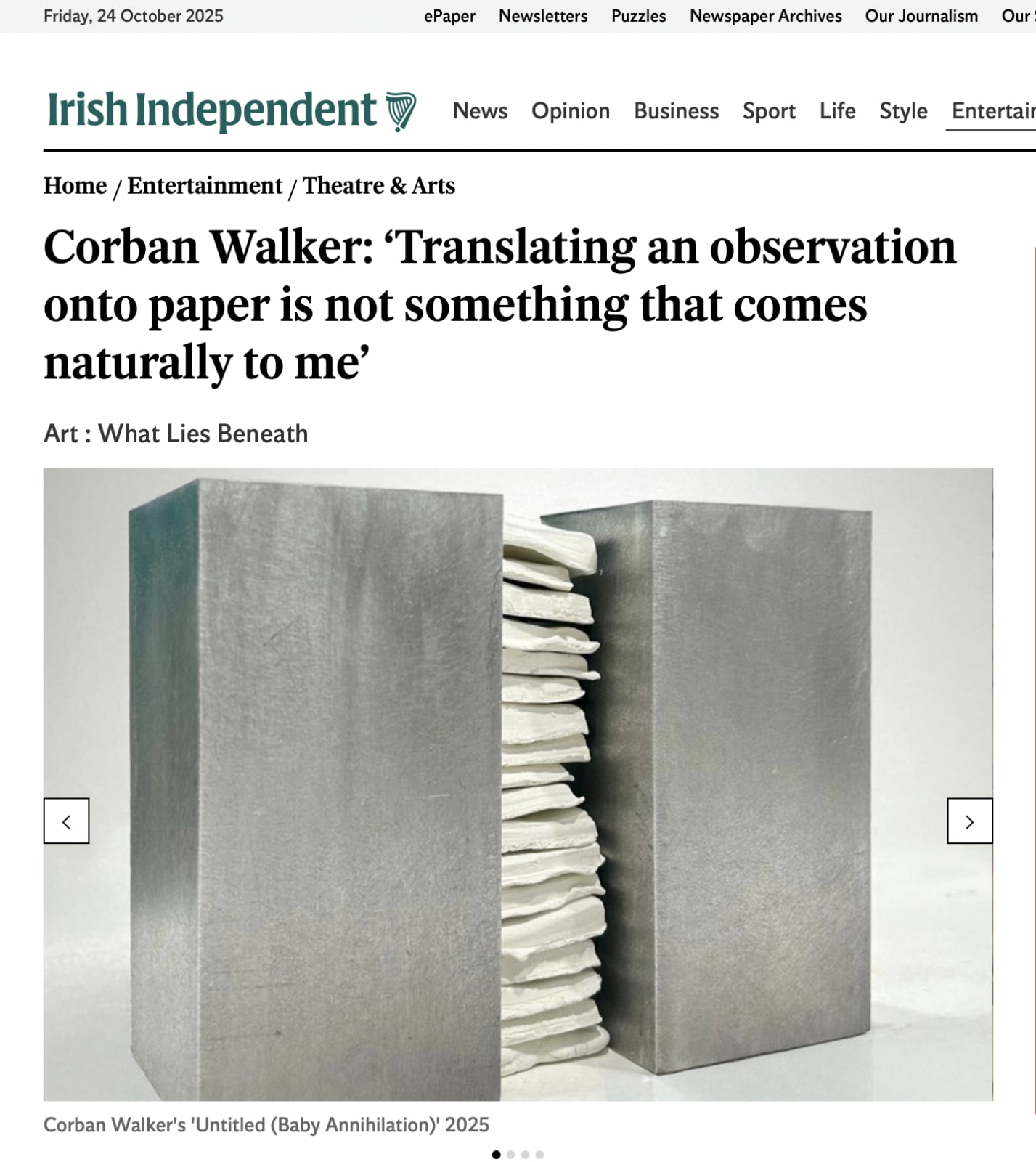Corban Walker: ‘Translating an observation onto paper is not something that comes naturally to me’
At Rosc ’77, 10-year-old Corban Walker experienced Gianni Colombo’s elastic kinetic installation in the Hugh Lane Gallery.
“The room was dark but the elastic band formation spanning across the room was lit by ultra-violet light, so when people touched the installation, the work vibrated in the room almost like a strobe. That blew my mind,” he said.
Encouraged by his parents Robin, an architect, and Dorothy, an art critic, Walker remembers “one day bringing home a colourful drawing of a bird I had done at school”.
His parents had it framed. “That felt like I had done something important. It hung in the kitchen. I still have it.”
In his first show, in 1994, Walker “was very surprised how much I saw my father in my own work. Architectural constructions in my work have been present in developing my work – and I don’t differentiate it from art, they are both the same.”
During Walker’s “10 years with the Jesuits”, his main art teacher “was a great guy but very disciplined in what he thought was art and what was not. That tension between us was quite beneficial.”
But NCAD did not match his expectations. There was no funding, he says, and “only the visiting artists and external examiners made the experience bearable.”
I realised I was experiencing a different perception of the world to everyone else
When young, Walker painted landscapes but has “always been very intimidated when it comes to drawing. I can scribble all day but to try and translate an observation on to paper is not something that comes naturally to me”.
Sculpture and installation became his preferred genre, as a man standing four feet tall.
“Three dimensionality became my means of expression because of my physical relationship to objects around me from the time I realised I was experiencing a different perception of the world to everyone else – and more specifically, to the obstructions before me that I would have to negotiate on a daily basis.
"So, it became a natural obsession to investigate form/space and how I could manipulate it.”
He continues: “‘Corbanscale is so obvious to me now, but it took a while to recognise it and embrace it. Eventually, I felt the need to own myself and now I use Corbanscale as a tool to make my existence accessible, ironically.”
His chosen materials include glass, steel, aluminium, wood, bronze, muslin, square tubing, dried porcelain clay and chalk pastel, materials that have “a quality that can be subverted or turned upside down and inside out”.
In his mid-30s, he lived in New York, where “my profile as an artist grew dramatically and internationally”. But New York became too expensive and Walker now lives “in a tiny village on the beautiful Blackwater” in Co Cork.
This powerful, hopeful work, Untitled (Baby Annihilation) – composed of dried porcelain clay, aluminium and square tubing – references “the 17,000 Palestinian babies and children killed by Israeli attacks in Gaza. That’s not including the children who cannot be accounted for under the rubble.
“I felt so sick, helpless and angry. Desperately trying to grasp onto hope, I made a stack of pillows, piled between two blocks of oppression. In the piece I suggest that the pile will rise above the walls of the occupation and genocide.”




